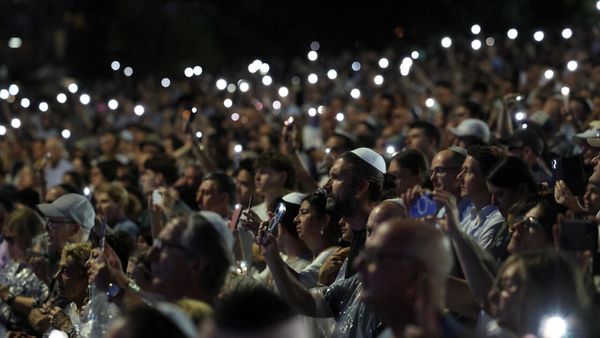
If there’s the tiniest sliver of an upside to the latest news about ticketing for the 2026 World Cup, it’s that we can finally dispense with the pretense that Fifa is interested in growing the game any more.
Fifa confirmed on Wednesday that it will, for the first time, use a dynamic ticket pricing model for the tournament, which will be co-hosted by the United States, Mexico and Canada. While tickets will initially range from $60 for the cheap seats in some group-stage matches to $6,730 for the best vantage point at the final, those prices will then be algorithmically handed over to the market to respond to demand, which will probably cause them to skyrocket. After all, the first tranche of tickets goes on sale through an application and lottery system next week, but the World Cup draw will not take place until December. The gap between ticket sales and the assignment of teams to those actual matches all but guarantees a surge of demand for a diminished supply.
Effectively, Fifa has absorbed the secondary market of ticket sales – the bit of the ticket hustle that arbitrages the market – in the name of protecting the fans, while subjecting fans to the exact same extortion. But rather than being a lone tout loitering outside a stadium, hoping to scalp a few tickets for a profit, it’s Fifa itself making the deals.
Dynamic pricing – or price-gouging, as it was traditionally called – feels like a betrayal of the unspoken covenant of fandom, where you agree to give away a decent amount of your money in exchange for a performance by a team or band or show you like. It does not give the event license to ask for every penny they can shake loose from you. Instituting it for the world’s most popular sporting event is another mask-off, you’re-just-customers-to-us moment from Fifa.
The global governing body once spread around World Cup hosting duties on the basis of the sport’s expansion, strategically picking nations, or co-hosts, not necessarily by potential profit margins but by regional footprint. It went to South Africa in 2010 and Brazil in 2014 not because they were the most moneyed markets, but to spread the sport around the globe. That was the supposed impetus for going to tiny Qatar in 2022 as well, a first Arab World Cup.
This World Cup, it is ever more plain, will be here in North America because the most disposable income is here. And Fifa will help itself to as much of it as it can.
“It’s key to highlight Fifa’s mission and Fifa’s objective of providing funding, providing opportunities, providing growth to our sport across all the 211 member associations,” Heimo Schirgi, Fifa’s World Cup 2026 chief operating officer, told the Associated Press. “And as part of that mission … we’re looking at optimizing the revenue, but also optimizing attendance in the stadium, right? So, it’s always a balance between different factors.”
It claims to do so out of a kind of fiduciary duty to its member federations, but to further constrain attendance at the sport’s signature event to the lucky few who can afford it gives the lie to serving the best interests of the sport writ large.
Fifa also justifies its use of dynamic pricing on the argument that this is simply how business is conducted in North America and what the consumer expects. If this assertion is shaky – a YouGov poll shows that Americans, in fact, think dynamic pricing for sporting events is unfair by a 2-1 ratio, among the highest margins in the world – it’s worth looking at how dynamic pricing has been greeted by fans at other high-profile events.
After widespread anger erupted at the dynamic pricing that more than doubled the cost of some Oasis reunion tour tickets in the United Kingdom, the band ditched the model for its US dates. Taylor Swift reportedly declined to price tickets to the Eras Tour dynamically as well, even though it probably meant leaving (even more) money on the table. “She didn’t want to do that to her fans,” an AEG executive explained in an interview. Even Wendy’s faced ferocious backlash when it announced that it would introduce dynamic pricing in its fast-food restaurants, before it backed down.
The argument in favor of dynamic pricing is that it’s also possible for the cost of tickets to drop, as they did when the get-in-the-building prices for the Fluminense-Chelsea Club World Cup semi-final tumbled from almost $500 to just $13 in July. But this time around, Fifa will institute a price floor of $60 – the initial face value – to foreclose the possibility of losing revenue.
Fifa is doing nothing illegal. Dynamic pricing is legal in North America so long as it doesn’t violate anti-trust laws, while UK legislators have taken an interest and Australia has moved to ban it. Some states, like New York, require a disclosure.
It is also legal to use the data you have on your customers – a browsing history suggesting, for instance, a desperation to snag tickets to a particular game – to set prices, which is known as “surveillance pricing”. Under former US president Joe Biden, the Federal Trade Commission looked into this practice, but that inquiry was swiftly abandoned by the Trump administration.
Fifa, then, isn’t breaking any rules. And it was probably naive to expect any other approach in the way it would monetize its cash cow event. But it confirmed, once more, that it is less a custodian of the sport than a proprietor expecting to maximize its return.
Leander Schaerlaeckens’ book on the United States men’s national soccer team is out in the spring of 2026. You can preorder it here. He teaches at Marist University.







